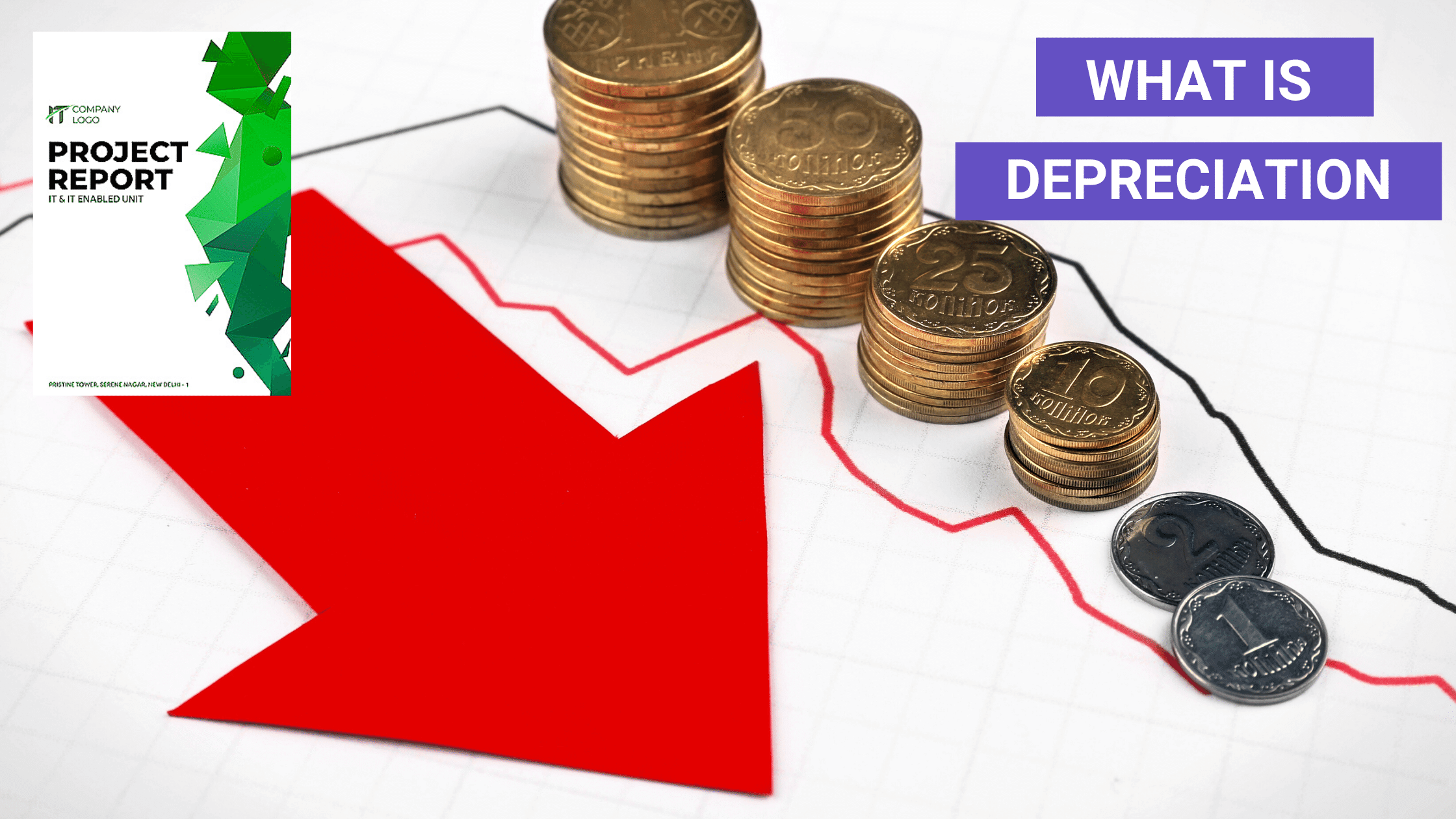When we purchase any fixed asset, its value decreases over time. It means that when we sell the asset, we are not selling it at its original price but at a lower price, and this lower value is known as depreciation.
An asset’s value decreases when use, damage, wear and tear, or obsolescence takes place. The term “Depreciation” measures this decline. The value of an asset may decrease for a variety of reasons, including unfavourable market conditions, among others.
Example: If we use your mobile phone as an example, it was likely purchased for $30,000 three years ago, but today it is no longer worth that amount because you have used it and it has depreciated in value.
ASSETS
An asset is something that has both current and potential value, such as a piece of machinery, a financial security, or a patent, and can frequently produce cash flows in the future. Personal property includes things like homes, cars, investments, works of art, and household goods.
Why do assets depreciate?
Generally speaking, newer assets are worth more than older ones. Depreciation calculates how much an asset loses in value over time, both directly from usage-related wear and tear and indirectly from factors like inflation and the introduction of new product models.
By charging depreciation, it lowers your company’s taxes. It reduces the earnings used to calculate taxes. Your taxable income decreases as depreciation expenses increase.
Which assets can be depreciated in accounting terms?
- You owned it.
- Be utilized in your business or to generate income.
- Have a known useful life
- Be anticipated to last for more than a year.
Assets include things like cars, buildings, furniture for offices, computers and other electronics, machinery and equipment, and some intangibles like computer software, copyrights, and patents.
Which assets do not include depreciation?
Items that do not wear out, become obsolete, or get used up cannot undergo depreciation because they do not meet IRS requirements.
- Land
- Collectables (art, coins, memorabilia)
- Investments (stocks and bonds)
- Any asset used for less than a year
- Personal property.
DEPRECIATION SCHEDULE
You can see how much each of your assets will depreciate over time in a table called a depreciation schedule. Usually, it contains the following details:
- A summary of the asset
- purchased on the date
- Cost of the asset as a whole Expected useful life
- employed the depreciation method
- Salvage value is the price you can get for an item after it has served its purpose (e.g., how much a scrapyard would pay for your old work truck).
- The amount of depreciation that is currently deductible
- The total amount of depreciation
- The asset’s resulting net book value (the total price paid minus any cumulative depreciation)
TERMS
- The useful life of a fixed asset is the time frame during which the organization considers it to be productive. The fixed asset is no longer cost-effective to operate after its useful life has passed.
- Asset salvage value: After a fixed asset’s useful life has expired, the company may consider selling it for less money. This is called an asset’s salvage value.
- The cost of an asset includes shipping, taxes, and setup and preparation costs.
- Amortization: Amortization is the term for depreciation in the case of intangible assets.
Deprivation Calculation Methods
STRAIGHT-LINE METHOD
The straight-line method is the most typical (and easiest) way to depreciate a fixed asset. This distributes the value equally over the asset’s useful life.
Graph of straight-line depreciation
It’s for small companies with straightforward accounting procedures that might not have access to an accountant or tax advisor to handle their taxes.
Depreciation formula=(asset cost minus salvage value) / useful life
DEPRIVATION OF BALANCE ON TWO LEVELS
This method depreciates an asset in greater detail. It enables you to write off a larger portion of an asset’s value right away rather than later.
It’s for companies that want to recoup more of an asset’s value upfront because it depreciates rapidly during the first few years of ownership.
(straight-line depreciation rate * 2) is the formula.(book value at the beginning of the year)
DEPRECIATION OF THE SUM OF THE YEAR’S DIGITS (SYD)
It depreciates more of an asset’s cost in the early years of its useful life and less in the later years.
It’s for companies that want to recover a greater portion of an asset’s value up front with a distribution that is a little more even than what the double-declining balance method enables.
(Remaining Asset Life/SYD) Formula(asset cost—salvage value)
Unit of Production Determination
A straightforward method for depreciating equipment based on how much work it accomplishes is the units of production method. “Unit of production” can refer to either the product that the machinery produces, such as widgets, or the number of hours it is in operation.
It’s for small businesses that want to take more depreciation in years when they use the asset more and less depreciation in years when they use the asset less and are writing off equipment with a quantifiable, widely accepted output over its lifespan (based, for example, on the manufacturer’s specifications). Employers use this method for expensive machinery or equipment because it necessitates monitoring equipment usage.
(asset cost – salvage value) / Units produced over the useful life
As a result, almost everything you see around you is depreciating. Depreciation is the wear and tear on an asset over its useful life.
About Finline!
Finline is an online platform for creating financial reports for getting bank loans and investments. It’s like ‘Canva’ but for financials. If you are an entrepreneur looking for a bank loan, you need to have a well-crafted project report. We, at Finline help you with that. Our team will help you create a powerful business plan in ten minutes. That too in your language. Also, our reports are accepted by all public and private sector banks working in India. Click to create your report.
